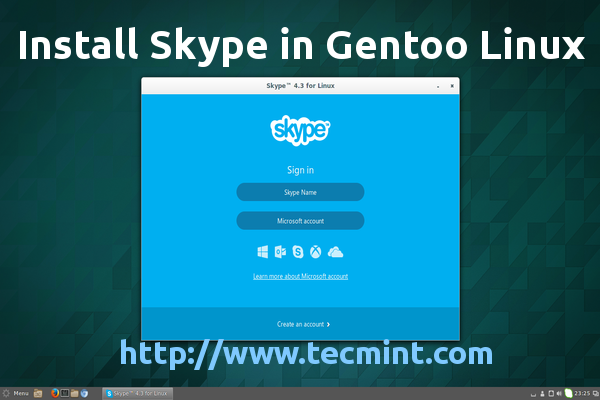
Oct 28, 2017 Free Download Gentoo Linux 20170907. Softpedia >Linux >Linux Distributions >Gentoo. The distro is available for download as bootable ISO images. Dec 28, 2015 Gentoo Linux - Iron Penguin EDITION: View unanswered posts. Software Para Detectar Redes Inalambricas Y Claves. Download torrents: x86-amd64 ISO.
Gentoo Linux - customized and optimized Gentoo Linux - customized and optimized Gentoo is a OS based on the Linux kernel and built using the Portage package management system. It is distributed as free and open-source software. Unlike a binary software distribution, the source code is compiled locally and is often optimized for the specific type of computer. Precompiled binaries are available for some larger packages or those with no available source code.
Gentoo Live Hybrid DVD 64bit download Distfiles 2.0 GB Torrent Gentoo Live Hybrid DVD 32bit download Distfiles 2.2 GB Torrent Gentoo minimal 64bit download Distfiles 261 MB Torrent MD5 2aee98f3f414680d66b50dd7673ad092 Gentoo minimal 32bit download Distfiles 254 MB Torrent MD5 de2484fe016b0e3c11e486ecd3b6078f Gentoo Stage3 64bit download Distfiles 225 MB Torrent MD5 764714942a550937c2b5dc Gentoo Stage3 32bit download Distfiles 214 MB Torrent MD5 003ccf863e65e5a8c934adc8c6449bb4 Wikipedia Distrowatch Website, forums and download PCDS.fi - PC-Data & Service © 2017.
Gentoo Linux Installation Guide Because the final user can choose which components are to be installed, Gentoo Linux installation is a very difficult process for unexperienced users, but this tutorial uses for simplification a pre-build environment provided by a LiveDVD and a stage 3 tarball with minimal system software required to complete installation. This tutorial shows you a step by step Gentoo installation simplified single-boot procedure, divided into two parts, using a 64-bit image with the last Stage 3 Tarball, using a GPT partition scheme and a customized Kernel image provided by Gentoo developers, so arm yourself with plenty of patience because installing Gentoo can be a long time consuming process. Step 1: Download Gentoo DVD Image and Prepare Network Configurations 1. Before proceeding with installation go to page and grab the last released LiveDVD image.
After you burn the ISO image place the DVD in your system DVD drive, reboot your computer, select your bootable DVD and Gentoo prompt LiveDVD should appear on your screen. Select the first option ( Gentoo x86_64) which boots the default Gentoo Kernel then press Enter key to continue. Open Terminal 4. Huge Chess Database. Promax Simulation Tool. Now it’s time to check your network configuration and Internet connectivity using ifconfig command and ping against a domain.
If you are behind a DHCP server, your network card should be automatically configured for you else use net-setup or pppoe-setup and pppoe-start commands or dhcpcd eth0 (replace it with your NIC plugged cable) in case your NIC has problems with automatically detect DHCP settings. For static network configurations use the following commands but replace IPs according to your network settings. $ sudo su - # ifconfig eth0 192.168.1.100 broadcast 192.168.1.255 netmask 255.255.255.0 up # route add default gw 192.168.1.1 # nano /etc/resolv.conf nameserver 192.168.1.1 nameserver 8.8.8.8. Verify Network Connection Step 2: Create Disk Partitions and Filesystems 5. After you network connectivity has been established and confirmed it’s time to prepare Hard Disk.
The following GPT partition layout will be used, but the same partition scheme can be also applied on a MBR BIOS disk using fdisk utility. /dev/sda1 - 20M size – unformatted = BIOS boot partition /dev/sda2 – 500M size – ext2 filesystem = Boot partition /dev/sda3 - 1000M size – Swap = Swap partition /dev/sda4 - rest of space – ext4 filesystem = Root Partition To create system disk partition switch to root account and run Parted utility with optimum alignment. $ sudo su - # parted -a optimal /dev/sda. Check Disk Partition The way that Parted deals with partition sizes is to tell it to start from 1MB + the desired value size (in this case start a 1 MB and end at 20 MB which results in a 19 MB partition size). Then create all the partitions using the same method as above. Boot Partition (parted) mkpart primary 21 500 (parted) name 2 boot Swap Partition (parted) mkpart primary 501 1501 (parted) name 3 swap Root Partition (parted) mkpart primary 1502 -1 (parted) name 4 root As you can see Root partition uses -1 as maximum value which means that it’s using all the remaining space -1 MB at the end of disk space.